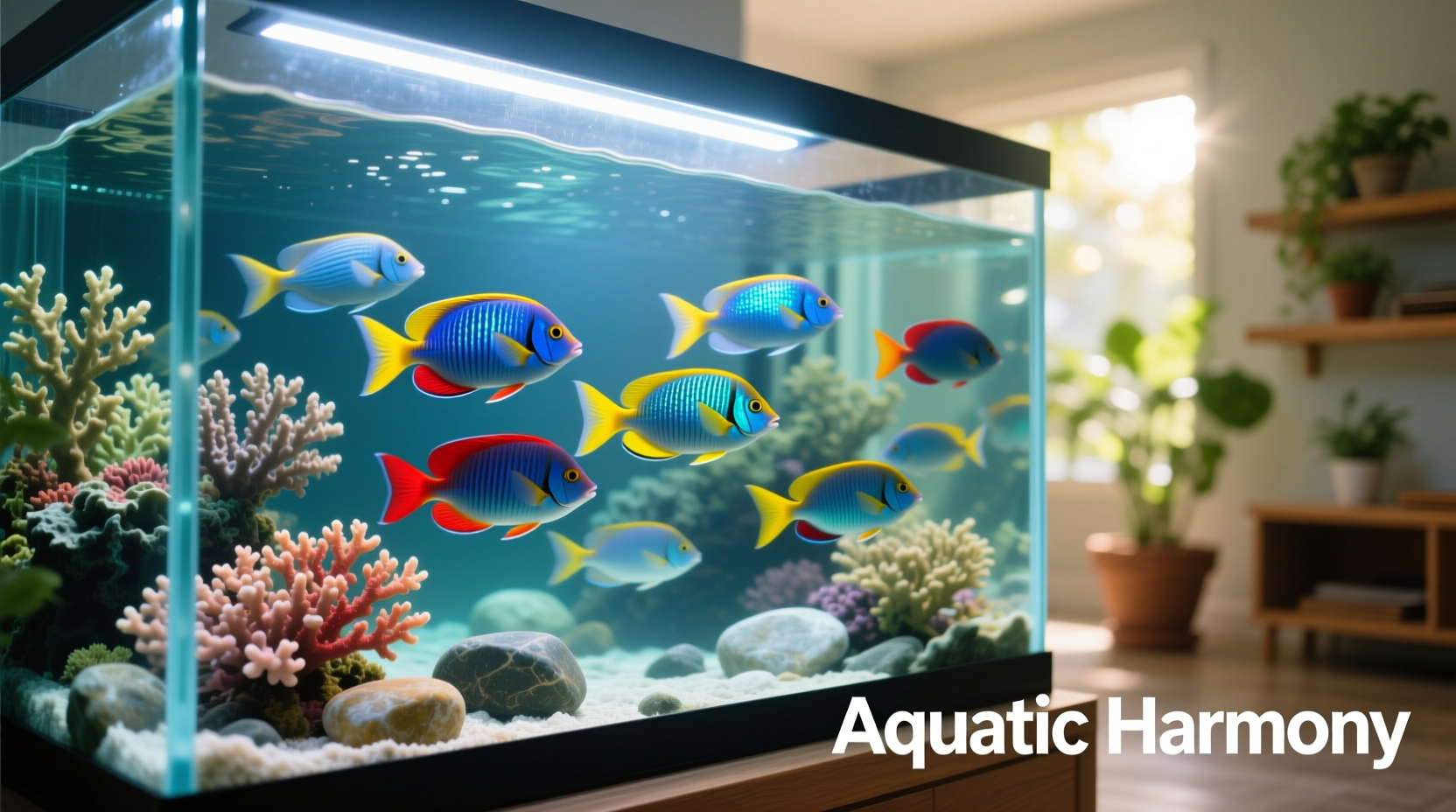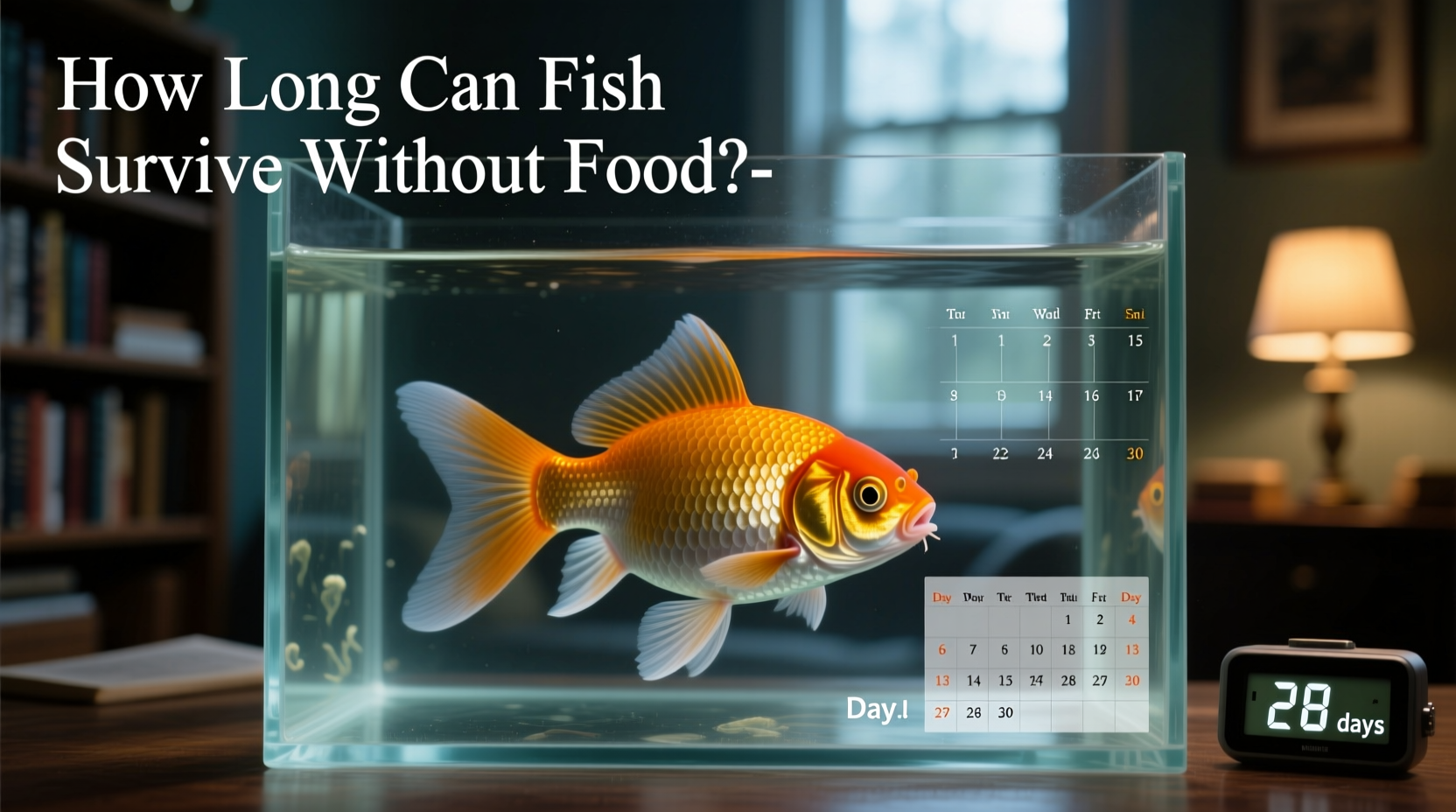Understanding Fish Fasting: What Every Aquarist Needs to Know
Whether you're planning a vacation or dealing with a finicky eater, knowing exactly how long fish can survive without food is crucial for responsible fishkeeping. While the general timeframe is 7-14 days for healthy adults, this varies significantly based on multiple factors that determine your specific situation.
Why Fish Survival Time Varies: The Critical Factors
Fish metabolism operates differently than mammals, making their fasting capabilities unique. Unlike humans who need regular meals, fish have evolved to handle periods of food scarcity in the wild. But the exact duration depends on several key variables:
| Fish Type | Typical Survival Without Food | Key Influencing Factors |
|---|---|---|
| Tropical Fish (Betta, Tetras, Guppies) | 4-7 days | Higher water temperature increases metabolism |
| Coldwater Fish (Goldfish, Koi) | 10-14 days | Colder water slows metabolism significantly |
| Larger Predatory Fish (Cichlids, Oscars) | 8-12 days | Body fat reserves extend survival time |
| Fry and Juvenile Fish | 2-4 days | Higher metabolic demands for growth |
The Science Behind Fish Metabolism During Fasting
Fish enter a conservation state when food becomes scarce. Their metabolic rate decreases by 30-50% depending on species and water conditions. According to research from the American Fisheries Society, this metabolic adaptation is an evolutionary survival mechanism that allows fish to endure seasonal food shortages in natural environments.
During the first 48 hours without food, fish maintain normal activity while depleting glycogen stores. Between days 3-7, they begin utilizing fat reserves, with noticeable reduction in activity levels. Beyond day 7 for tropical species (or day 10 for coldwater fish), protein breakdown begins, leading to muscle wasting and compromised immune function.

Practical Guidance for Fish Owners
Vacation Planning: When You'll Be Away
For absences under 5 days, most established aquariums don't require feeding. The algae and microorganisms present provide sufficient nutrition. For longer trips:
- 3-7 day absence: Use slow-release food blocks sparingly (one per 10 gallons)
- 7-14 day absence: Arrange for someone to feed every 5-7 days with precise portions
- Over 14 days: Never leave automatic feeders unattended for extended periods
When Your Fish Stops Eating
If your fish refuses food but appears otherwise healthy, monitor for 2-3 days before becoming concerned. Common reasons include:
- Stress from tank changes or new tank mates
- Water parameter fluctuations (test ammonia, nitrite, pH)
- Normal fasting behavior in some species
However, if your fish shows both refusal to eat and symptoms like lethargy, clamped fins, or rapid breathing, consult an aquatic veterinarian immediately. These indicate serious health issues rather than simple fasting.
Important Context Boundaries: When General Guidelines Don't Apply
The standard survival timeframe applies only to healthy adult fish in properly maintained aquariums. Several critical limitations affect these estimates:
- Newly established tanks: Fish in cycling tanks have less natural food available and may starve faster
- Overcrowded systems: Increased competition for limited natural food sources reduces survival time
- Disease conditions: Sick fish deplete energy reserves more rapidly
- Temperature extremes: Water above 80°F (27°C) doubles metabolic rate, halving survival time
Warning Signs Your Fish Has Been Without Food Too Long
Monitor for these critical indicators that your fish has exceeded its safe fasting period:
- Noticeable weight loss (indentation above eyes, visible spine)
- Extreme lethargy (resting on bottom, minimal movement)
- Fins clamped tightly against body
- Loss of color vibrancy
- Erratic swimming patterns
Reintroduce food gradually after extended fasting periods. Sudden large meals can cause fatal digestive issues in starved fish. Start with small portions of high-quality food once daily, increasing over 5-7 days to normal feeding amounts.
Best Practices for Responsible Fish Feeding
Understanding how long fish can survive without food helps establish proper feeding routines:
- Feed adult fish once daily with portions consumed in 2-3 minutes
- Young fish require 2-3 smaller feedings daily
- Implement one fasting day weekly for digestive health
- Monitor fish condition regularly to adjust feeding as needed
- Use high-quality foods with balanced nutrition for fewer feedings
Remember that overfeeding causes more aquarium problems than underfeeding. Excess food decays, polluting water and creating toxic conditions that harm fish more quickly than temporary food deprivation.











 浙公网安备
33010002000092号
浙公网安备
33010002000092号 浙B2-20120091-4
浙B2-20120091-4